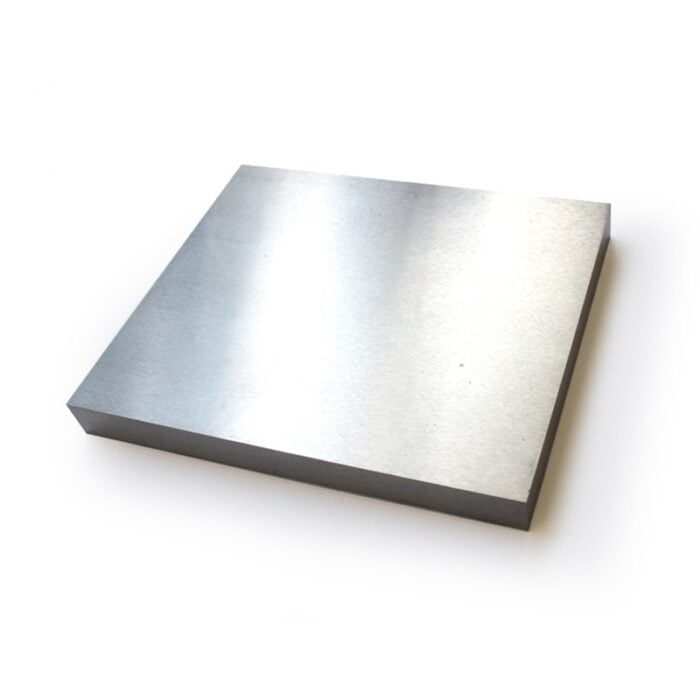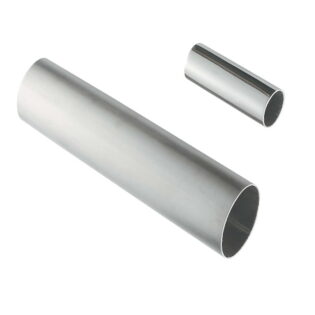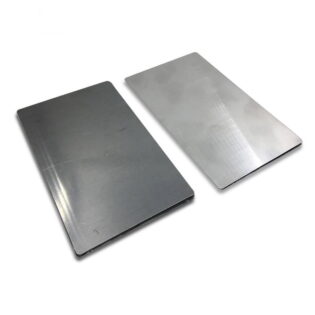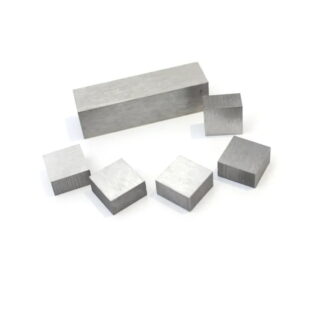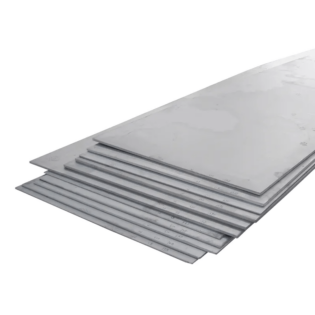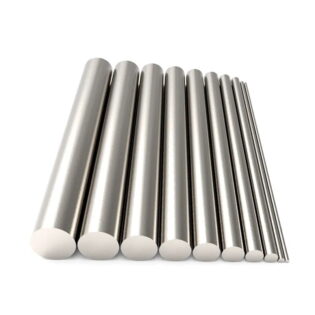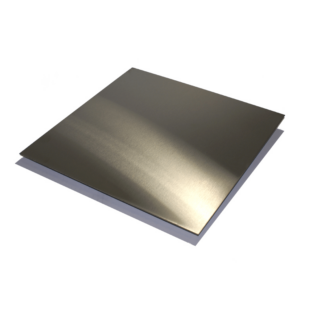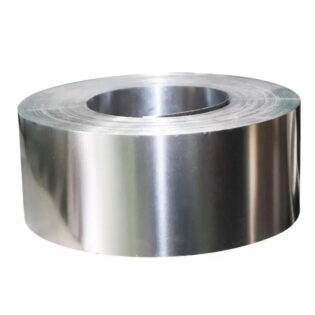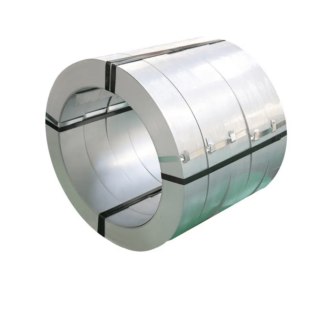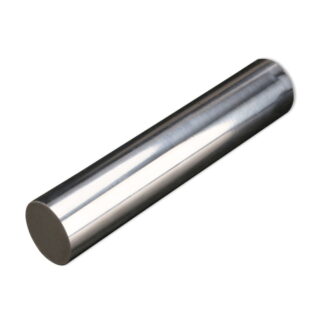二相 2205 ステンレス鋼の紹介
 The yield strength of 2205 duplex stainless steel is more than twice that of ordinary austenitic stainless steel .This feature enables designers to reduce weight when designing products, making this alloy more cost-effective than 316 and 317L.2205 alloy is particularly suitable for the temperature range of -50°F/+600°F. For applications beyond this temperature range, this alloy can also be considered, but there are some limitations, especially when applied to welded structures.Application Structure Processing Chemical composition Mechanical Properties Advantage Disadvantage
The yield strength of 2205 duplex stainless steel is more than twice that of ordinary austenitic stainless steel .This feature enables designers to reduce weight when designing products, making this alloy more cost-effective than 316 and 317L.2205 alloy is particularly suitable for the temperature range of -50°F/+600°F. For applications beyond this temperature range, this alloy can also be considered, but there are some limitations, especially when applied to welded structures.Application Structure Processing Chemical composition Mechanical Properties Advantage Disadvantage両面印刷 2205 アプリケーション
- 圧力容器、高圧貯蔵タンク、高圧パイプ、熱交換器(化学処理産業)。
- 石油およびガスのパイプライン、熱交換器の継手。
- 下水処理システム。
- 紙パルプ産業の分級機、漂白装置、保管および処理システム。
- 高強度、耐食性の高い環境下での回転軸、プレスロール、ブレード、インペラなど。
- 船やトラックの貨物箱
- 食品加工装置
標準
- ASTM/ASME…………..A240 UNS S32205/S31803
- ユーロノーム…………..1.4462 X2CrNiMoN 22.5.3
- AFNOR……………….Z3 CrNi 22.05 AZ
- DIN…………………….W.番号 1.4462
耐食性
均一な腐食
クロム含有量 (22%)、モリブデン含有量 (3%)、窒素含有量 (0.18%) により、2205 の耐食性はほとんどの環境で 316L および 317L よりも優れています。
耐局部腐食性
2205 二相ステンレス鋼にはクロム、モリブデン、窒素が含まれているため、酸化性溶液や酸性溶液中での孔食や隙間腐食に対する耐性が高くなります。
耐応力腐食性
ステンレス鋼の二相微細構造は、ステンレス鋼の耐応力腐食割れ性の向上に役立ちます。特定の温度、ひずみ、酸素、塩化物が存在すると、オーステナイト系ステンレス鋼は塩化物応力腐食を受けます。これらの状態を制御するのは容易ではないため、304L、316L、および 317L の使用はこの点で制限されています。
耐食疲労
2205二相鋼は強度と耐食性が高いため、高い腐食疲労強度を備えています。処理装置は腐食環境や負荷サイクルの影響を受けやすいため、2205 の特性はそのような用途に非常に適しています。
デュプレックス 2205 構造
2205 の化学組成は、1900°/1922°F (1040°/1080°C) の溶体化処理後に理想的な微細構造 50 α / 50 γ を得ることができます。熱処理温度が 2000°F を超えると、フェライト組成が増加する可能性があります。他の二相ステンレス鋼と同様、2205 合金は金属間化合物相が析出しやすいです。金属間化合物相は 1300°F から 1800°F の間で析出し、1600°F で析出速度が最も速くなります。したがって、金属間相が存在しないことを確認するために 2205 をテストする必要があります。このテストは ASTM A 923 を参照します。
熱成形
We recommend that the forming should be done at temperatures below 600°F as much as possible. During the hot forming process, the entire workpiece should be heated as a whole, and should be carried out in the temperature range of 1750°F to 2250°F.Alloy 2205 is very soft at this temperature. If the temperature is too high, 2205 alloy is prone to hot tearing. If it is lower than this temperature, austenite will fracture. Below 1700°F, the intermetallic phase will form quickly due to the influence of temperature and deformation.After the hot forming is completed, it should be solid-solution annealed at a minimum temperature of 1900°F and quenched to restore its phase balance, toughness and corrosion resistance.We do not recommend stress relief, but if you must do so, the material should be solid solution annealed at a minimum temperature of 1900°F, then quickly cooled and water quenched.冷間成形
2205 合金は切断および冷間成形が可能です。ただし、2205 合金自体の強度と硬度が高いため、オーステナイト鋼よりも多くの冷間成形が必要です。また、強度が高いためスプリングバックにも十分配慮する必要があります。
熱処理
Alloy 2205 should be annealed at a minimum temperature of 1900°F, then rapidly cooled and water quenched. This treatment is used for solution annealing and stress relief.If the stress relief treatment is performed at a temperature lower than 1900°F, it is easy to cause the precipitation of harmful metallic or non-metallic phases.被削性
高速工作機械では、2205 合金の送り速度と切削速度は 316L と同じです。炭化ナイフを使用した場合、316Lに比べて切断速度が約20%低下します。ここでは、マシンとそのコンポーネントのパフォーマンスが重要な役割を果たします。
溶接
The weldability of 2205 alloy is very good. The required performance of 2205 alloy is that the weld metal and thermally deteriorated parts still maintain the same corrosion resistance, strength and toughness as the base metal.The welding of 2205 is not difficult, but the welding procedure needs to be designed so that after welding, it can maintain a good phase balance and avoid the precipitation of harmful metal phases or non-metal phases.2205 can be welded in the following equipment: GTAW (TIG); GMAW (MIG); SMAW (“stick” electrode); SAW; FCW; and PAW特徴:
1. 2205 duplex stainless steel alloy as compared with austenitic stainless steel 316L and 317L, 2205 superior performance in resistance to pitting and crevice corrosion aspect, it has a high corrosion resistance, as compared with austenite, it The coefficient of thermal expansion is lower and the thermal conductivity is higher.
2. Compared with austenitic stainless steel, duplex stainless steel 2205 alloy has twice its compressive strength. Compared with 316L and 317L, the designer can reduce its weight. Alloy 2205 is especially suitable for the temperature range of -50°F/+600°F. Under strict restrictions (especially for welded structures), it can also be used at lower temperatures.Duplex 2205 の化学組成
Performance supplement: main component: 22Cr-5.3Ni-3.2Mo-0.16N; national standards: NAS 329J3L, UNS S32205/S31803, DIN/EN 1.4462, ASTM A240, ASME SA-240; mechanical properties: tensile strength: σb≥ 640Mpa; Elongation: δ≥25%; Typical working conditions: 20% dilute sulfuric acid, below 60℃, annual corrosion rate <0.1mm; Matching welding wire: ER2209.1. Chemical composition (JIS G 4305-005) (wt%)| 化学組成 | C | そして | ん | P | S | Cr | で | モー | N |
| 標準 | ≤0.03 | ≤1.00 | ≤2.00 | ≤0.04 | ≤0.03 | 21.0~24.0 | 4.5~6.5 | 2.5~3.5 | 0.08~0.2 |
| 一般的な | 0.025 | 0.6 | 1.5 | 0.026 | 0.001 | 22.5 | 5.8 | 3.0 | 0.16 |
2. 性能(JIS G 4305-2005)
| 区別する | 機械的性質 | 備考 | | |
| イース(MPa) | Ts (MPa) | 彼 (%) | Hv | 2.0t/2B |
| ≥450 | ≥620 | ≥25% | 18歳以上 | ≤ 320 |
| 500 | 670 | 35% | 27 | 280 |
3. 物性
| 密度(g/cm) | 磁気 | 比熱(J/gC) | 熱伝導率100℃(W/m. | 熱膨張率20~100℃(10/℃) |
| 7.8 | 持っている | 0.45 | 19.0 | 13.7 |
Duplex 2205 の機械的特性
| 2205 二相ステンレス鋼の室温機械的特性 |
| 鋼種 | 製品仕様 | 抗張力 | 降伏強さ | 伸長 | |
| MPa | MPa | % | |
| 00Cr22Ni5Mo3N | Φ20mm、バー | ≥680 | ≥450 | ≥25 | |
| SAF2205 | 肉厚 ≤ 20mm、パイプ | 680/880 | >450 | >25 | |
| ブランク厚さ ≤ 200mm、鍛造 | 680/880 | >410 | >25 [1] | |
2205 二相ステンレス鋼の高温機械的特性
|
| 鋼種 | 製品仕様 | 抗張力 | 降伏強さ | 伸長 | 温度 |
| MPa | MPa | % | ℃ |
| 00Cr22Ni5Mo3NSAF 2205 | Φ20mm、バー | 710 | 470 | 37 | 100 |
| 680 | 393 | 32 | 200 |
| 650 | 380 | 30 | 300 |
| | | | |
| 肉厚 ≤ 20mm、パイプ | >630 | >370 | | 100 |
| >580 | >330 | | 200 |
| >560 | >310 | | 300 |
| | | | |
| ブランク厚さ ≤ 200mm、鍛造 | >630 | >365 | | 100 |
| >580 | >315 | | 200 |
| >560 | >285 | | 300 |
デュプレックス 2205 スチールの利点
- 2205 stainless steel plate, 2205 stainless steel, duplex stainless steel 2205, 2205 stainless steel materials, are Swedish stainless steel grades.
The difference between duplex 2205 stainless steel plate and austenitic 304 stainless steel plate
- The yield strength is more than twice that of ordinary austenitic stainless steel, and it has the necessary requirements for forming
Sufficient plasticity. The wall thickness of storage tanks or pressure vessels made of duplex stainless steel is 30-50% less than that of commonly used austenite, which is beneficial to reduce costs.
- 耐応力腐食割れ性に優れています。合金含有量が最も低い二相ステンレス鋼であっても、特に塩化物イオンを含む環境においては、オーステナイト系ステンレス鋼よりも耐応力腐食割れ性が高くなります。応力腐食は、通常のオーステナイト系ステンレス鋼では解決が困難な顕著な問題です。
- 多くの媒体で最も一般的に使用されている 2205 二相ステンレス鋼の耐食性は、通常の 316L オーステナイト系ステンレス鋼より優れていますが、超二相ステンレス鋼は非常に高い耐食性を持っています。酢酸やギ酸などの一部の媒体では、高合金のオーステナイト系ステンレス鋼や耐食合金さえも置き換えることができます。
- 耐局部腐食性に優れています。同じ合金含有量のオーステナイト系ステンレス鋼と比較して、耐摩耗腐食性、耐疲労腐食性がオーステナイト系ステンレス鋼よりも優れています。
- オーステナイト系ステンレス鋼よりも線膨張係数が低く、炭素鋼に近い値です。炭素鋼との接続に適しており、複合プレートやライニングの製造など、工学的に重要な意味を持っています。
- 動的負荷条件下でも静的負荷条件下でも、オーステナイト系ステンレス鋼よりも高いエネルギー吸収能力を備えています。衝突や爆発など突発的な事故に対応するための構造部品です。二相ステンレス鋼には明らかな利点があり、実用的な価値があります。
二相 2205 ステンレス鋼の欠点
オーステナイト系ステンレス鋼と比較して、二相ステンレス鋼には次のような欠点があります。
- 用途の汎用性と多用途性はオーステナイト系ステンレス鋼ほどではありません。たとえば、使用温度は摂氏 250 度未満に制御する必要があります。
- 塑性靱性はオーステナイト系ステンレス鋼よりも低く、冷間および熱間加工技術と成形性能はオーステナイト系ステンレス鋼ほど良くありません。
- 中温脆性ゾーンがあり、有害な相の出現や性能の損傷を避けるために、熱処理と溶接のプロセスシステムを厳密に制御する必要があります。
二相 2205 ステンレス鋼板とフェライト 410 ステンレス鋼板の違い: 総合的な機械的特性、特にプラスチックの靭性がフェライト系ステンレス鋼よりも優れており、フェライト系ステンレス鋼ほど脆性の影響を受けません。
- 耐応力腐食性を除く他の耐局部腐食性はフェライト系ステンレス鋼よりも優れています。
- 冷間加工プロセス性能と冷間成形性能はフェライト系ステンレス鋼よりもはるかに優れています。
- 溶接性もフェライト系ステンレス鋼よりも優れています。通常、溶接前の予熱や溶接後の熱処理は必要ありません。
- フェライト系ステンレス鋼よりも適用範囲が広いです。二相ステンレス鋼は、フェライト系ステンレス鋼と比較して、合金元素の含有量が多く、価格が比較的高いという欠点があります。一般にフェライトにはニッケルは含まれません。
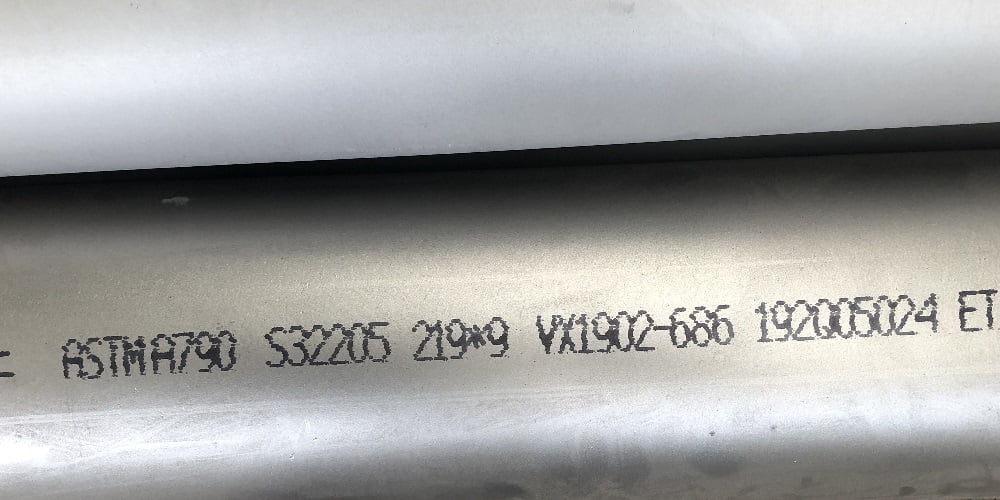 The yield strength of 2205 duplex stainless steel is more than twice that of ordinary austenitic stainless steel .This feature enables designers to reduce weight when designing products, making this alloy more cost-effective than 316 and 317L.2205 alloy is particularly suitable for the temperature range of -50°F/+600°F. For applications beyond this temperature range, this alloy can also be considered, but there are some limitations, especially when applied to welded structures.Application Structure Processing Chemical composition Mechanical Properties Advantage Disadvantage
The yield strength of 2205 duplex stainless steel is more than twice that of ordinary austenitic stainless steel .This feature enables designers to reduce weight when designing products, making this alloy more cost-effective than 316 and 317L.2205 alloy is particularly suitable for the temperature range of -50°F/+600°F. For applications beyond this temperature range, this alloy can also be considered, but there are some limitations, especially when applied to welded structures.Application Structure Processing Chemical composition Mechanical Properties Advantage Disadvantage